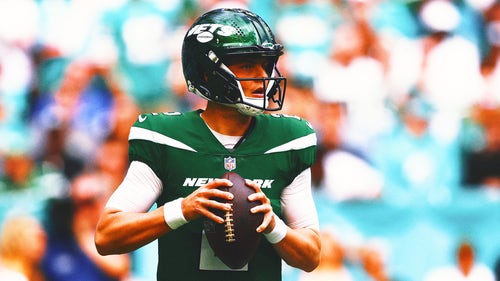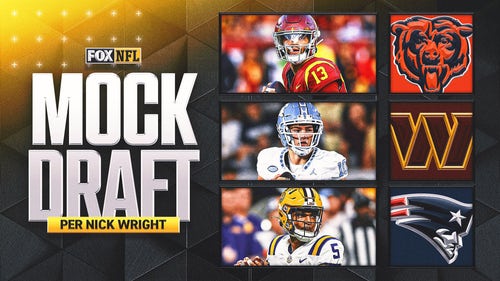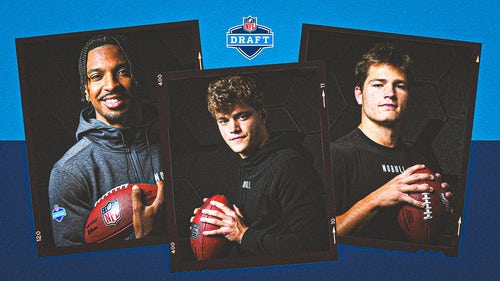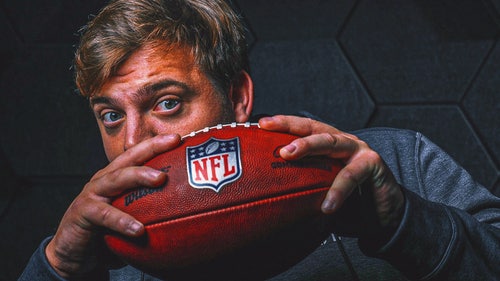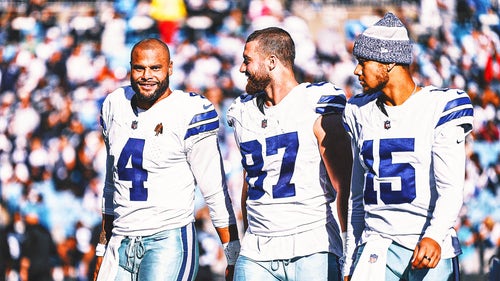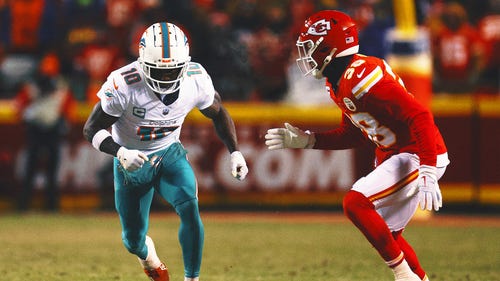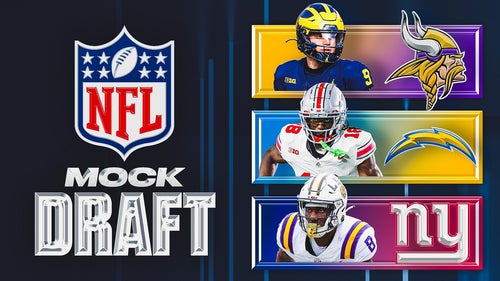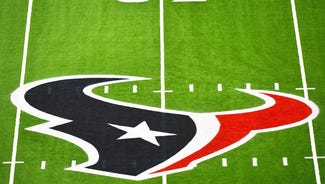
Griffin's knee injury is on Shanahan
The most sickening part about watching Robert Griffin III crumple in a heap just outside his own end zone with 6:19 left in the Washington Redskins’ 24-14 wild card loss to the Seattle Seahawks on Sunday wasn’t the way the rookie quarterback’s right knee contorted, gruesomely, in a way that knees most certainly are not designed to bend.
Nor was it the chilling silence in the immediate aftermath from a FedEx Field crowd — one attending a home playoff game for the first time in 13 years — seeing the same thing you and I did and shuddering at the thought of what it might mean for their star player’s once-bright future, and, consequently, the outlook of their team.
The most frustrating and maddening — and downright infuriating — aspect of the injury wasn’t that the fumble resulting from Griffin’s injury ended the Redskins’ already-slim chances at a comeback or that one of the league’s most enjoyable feel-good stories came to an abrupt end in the most disheartening way possible, either.
No, the worst thing about the way Sunday’s game ended, both for the Redskins and Griffin, the No. 2 pick in April’s draft and a leading candidate for Offensive Rookie of the Year, was that all of it — the injury, the loss and the mindless babbling to explain it all away afterward — could have been prevented. None of it should have ever happened.
If Redskins coach Mike Shanahan had any good sense about him, he’d have taken Griffin, who first sprained his right LCL on Dec. 9 against Baltimore, out of the game late in the first quarter, the moment he came limping back from the sideline after his knee buckled while planting to throw a pass. At worst, Shanahan should have stripped him of his helmet at the half, following a quarter of startling ineptitude with a visibly hobbled Griffin at the helm.
But because a young player was too competitive to quit in his first playoff game and his veteran coach didn’t have the guts to make the tough decision for him, the Redskins will be watching from home as the Seahawks move on to face Atlanta, and one of the league’s most exciting players may never be the same again.
The extent of Griffin’s injury won’t be known until later this week, but given the way the knee appeared to shred, and given Griffin’s history with his right ACL, which he tore in 2009 while still at Baylor, it’s hard not to fear the worst. And, unfortunately, it was something seemingly everyone but Shanahan and Griffin saw coming.
“I think I did put myself at more risk by being out there,” Griffin said. “But every time you step on the football field in between those lines, you’re putting your life, your career (and) every single ligament in your body in jeopardy. That’s just the approach I had to take towards it. My teammates needed me out there, so I was out there for them.”
As poorly as things ended for the Redskins, it’s easy to lose sight of how well things started. Washington easily scored on its first drive on a touchdown pass to running back Evan Royster, and followed it up with another unabated scoring drive on the next possession, which ended with a 4-yard toss to tight end Logan Paulsen.
But it was a play two snaps before the Paulsen touchdown that should have been a watershed moment in the game that could have saved the Redskins’ season and Griffin’s knee. On first-and-goal from the Seattle 4-yard line, Griffin took the snap and rolled out to his right and eventually, after running out of real estate, threw an awkward, sidearm pass toward Pierre Garçon that fell harmlessly to the turf.
After the play, Griffin returned to the field, and to say he did so gingerly would not do his condition justice. He looked like a wounded animal, to the point where he could hardly walk, much less run the read-option. After the touchdown pass, Griffin retreated to the locker room with Dr. James Andrews, a Washington team physician who, earlier Sunday, publicly expressed concern over Griffin playing, and got his knee taped.
When he came back, Griffin was still something short of mobile, and sure as heck couldn’t move the way he did when he helped lead the Redskins to seven straight wins to close the regular season. But Shanahan looked an ineffective, and potentially already injured, quarterback in the face and told him to strap back up and get on the field anyway.
“I talked to Robert and Robert said to me, ‘Coach, there’s a difference between injured and being hurt. I guarantee I’m hurting right now; give me a chance to win this football game because I guarantee I’m not injured,’” Shanahan said. “So that was enough for me.”
From that moment on, Griffin, who moved the football effortlessly before that incomplete pass to Garçon, could do very little to combat a Seahawks defense that is already good enough without a gimpy quarterback’s help.
After amassing 129 yards of offense, nine first downs and two touchdowns on their first two drives, the Redskins only managed 74 more yards of offense, six first downs and no points. The Seahawks outgained the Redskins 271-38 in the second and third quarters, alone.
Some of that had to do with the Seattle defensive unit, which was among the best in the NFL this season and allowed a league low in points per game. But more of it, if not most of it, was a result of RG3 not being RG3.
“That’s my guy,” Seahawks cornerback Richard Sherman said of RG3 after the game. “He’s a hell of a player. He’s one of the best players I’ve ever seen. He presents a lot of challenges. I’m sure if he were 100 percent it would have been a different game.”
Offensively, Seahawks running back Marshawn Lynch carried the ball 20 times for 132 yards and a touchdown, and overcame an earlier goal line fumble with a tough 27-yard touchdown run in the fourth quarter to give the Seahawks the lead for the first time — and for good. And quarterback Russell Wilson, an Offensive Rookie of the Year candidate in his own right, threw for 187 yards and a touchdown and ran for another 67 yards, only serving to underline what Griffin couldn’t do.
“You saw the difference between a healthy Russell Wilson and Robert not being healthy,” Redskins linebacker London Fletcher said. “I don’t know what percentage (Griffin) was at, but you could tell he just couldn’t do the things that he had done all season long to make those dynamic plays.”
With that in mind, it made little sense to leave Griffin in, regardless of whether he was endangering himself physically by doing so. Backup quarterback Kirk Cousins has proven capable this season, especially in a win over Cleveland on Dec. 16 with Griffin on the mend, and 100 percent of him would have certainly been more effective against Seattle than 50 percent of the starter — maybe even effective enough to win.
In the end, though, the most disconcerting part of Shanahan leaving Griffin in was the safety risk and lack of concern for his livelihood that it represented. Every game is full of players too hurt to play and too competitive to realize it, and it’s up to the coach to know when enough is enough.
After the game, Griffin speculated that, had Shanahan pulled him, he would have run back out onto the field and continued to play anyway, and his equally blind teammates seemed to agree that the decision should have been left up to the player.
“This is the playoffs, it’s a do-or-die situation,” Fletcher said. “Guys have a great deal of intestinal fortitude; never underestimate the heart of an athlete in a competitive situation. I think with Robert, he’s willed himself to be able to play, and he’s earned the right to be able to play if he tells coach he can play.”
But it’s not up to the player. It can’t be. That’s why the dangers of concussions are such a hot-button issue today, and other injures should be treated with equal care. Leaving Griffin on the field, with a tattered knee and a precedent for knee injuries, was reprehensible, and if the news turns out to be as bad as it looked, Shanahan should be held accountable for what he did to Griffin’s future.
There’s a fine line between being tough and being dumb, and RG3 crossed it while his team enabled him. After the game, Shanahan said he would have deserved to get fired had he not taken Griffin out of the game following the fourth quarter injury, but the real shame is that he didn’t take Griffin’s injury that seriously from the start.
You can follow Sam Gardner on Twitter or e-mail him at samgardnerfox@gmail.com.






































































































































